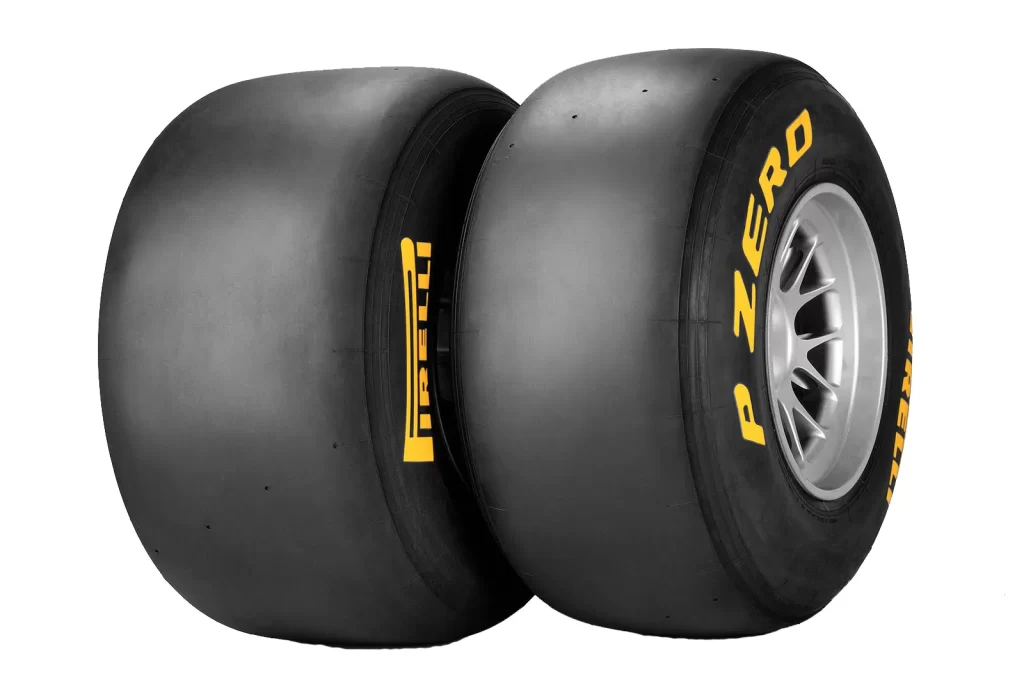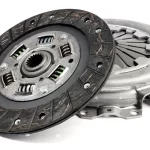Catch a severe case of tire envy while watching your preferred form of motorsport. Ponder where all of those used racing slicks go after pit stops and wonder why not to your front doorstep? We feel you.
There’s just something about full-fledged motorsport tires, and their dedicated, uncompromising purpose. There’s no reason that racing slicks exist other than to facilitate speed and neck-bending traction, and that’s just plain cool.
The growth of track days and high-performance driving events has popularized racing Tires more than ever before and actually brought them from the television to the doorsteps of many recreational, amateur performance driving enthusiasts. If you want a dose of the most primo tire compounds in the world, nowadays you can have it, but best know what you’re getting into.
The term “racing slick” is derived from the tread characteristics of the tire – namely, there really aren’t any to speak of.
Instead of the various tread blocks, grooves, and sipes that are a fixture of nearly every other type of tire, racing Tires are characterized by their flat, “slick” tread surface.
Some racing Tires include one or two circumferential grooves (sometimes resembling dashes), but that’s about as diverse as they come in the design department.
The performance driving advantage of a racing slick lies with this uninterrupted tread surface. Under high load and stress, 100% of the tire contact patch is in touch with the road surface. There’s no tread flex, squirm, or traditional tread voids, which work against the traction limit of the tire. A racing slick absolutely maximizes the tire contact patch and therefore grip.
Add a super sticky, high-grip tire compound to the slick tread surface, and voila, motorsport magic.

How much faster are racing slicks?
Faster – most often, considerably faster than any other type of tire around.
If operating in the optimum temperature window and in the hands of a capable car and driver combination, racing Tires are unrivaled. Other than boosting your vehicle by about a bazillion horsepower, no other single vehicle modification can deliver such a dramatic performance and lap time gain.
In a lap time exercise involving BFGoodrich performance street tires and racing Tires, professional racing driver Randy Pobst was able to cut almost 6 seconds per lap around a standard-length road course when using slicks.
Are racing slicks street-legal? Can they be used on the street?
Some racing slicks have achieved “DOT legal” status, meaning that they’re technically eligible for public road use. However, this is one of those “can vs. should” situations, with lots of motivating factors to use racing slicks exclusively where they belong – on the race track.
- Racing Tires lack the water evacuation tread technologies to be safely driven on wet roads with standing water. The risk of hydroplaning and losing control is unacceptably high.
- Racing slicks are designed to operate and deliver grip with the surface of the tire (the tire compound) at a very high temperature. This optimum temperature range can really only be achieved when driving hard on the track.
- Below the optimum range (when “cold”) racing Tires are renowned for very low grip. On the street, the optimum temperature range will rarely be achieved. Racing slicks might, therefore, deliver less grip, and be less safe than a street performance alternative during standard public road driving, even when conditions are dry.
- Racing slicks used conventionally on the street will experience an exceptionally high wear rate. The lifespan of racing Tires is limited no matter what, and using them on the road will drastically shorten their tread life.
- Manufacturers of racing slicks universally advise against using them for highway and public road use.
How long do racing slicks last?
As they say, racing slicks are here for a good time, not a long time.
While they have immense durability and toughness in high-performance driving environments, racing Tires will only deliver their strongest grip attributes for so long. Oftentimes, a racing slick will have tread life remaining, i.e., the tire is not worn to the cords, but the grip life is finished.
This is because racing Tires have a finite number of “heat cycles,” which is the process by which the tire compound rises to the optimum temperature range, delivers maximum grip, then cools back down.
How many heat cycles a driver gets from a set of racing slicks are dependent upon a wide variety of factors – vehicle type and weight, driving style, session duration, race track characteristics, speed, and more.
Anyone “investing” in a set of racing slicks should be prepared for a very limited shelf life. Advanced recreational drivers can use up a set of racing slicks in just 1-2 track days.
Different types of slicks
Road racing/road course slicks and drag racing slicks – commonly called drag radials – are available.
The two types of slicks have fundamentally different characteristics due to their intended uses. Drag radials are engineered to deliver maximum longitudinal grip in short bursts. Road racing slicks provide sustained maximum grip under various longitudinal and lateral loads.
No hunt for maximum grip is complete without at least the consideration of racing slicks, but they’re not without tradeoffs. Also, don’t forget, the road racers on TV aren’t paying for their tires. Racing slicks are almost always very expensive just to acquire, let alone use on the regular.
High-performance street and track tires like the Nitto NT01 and Michelin Pilot Sport Cup 2 will get you most of the way to a legitimate racing slick but without quite so much expense and compromise. For the majority of drivers, even those who participate in track days and high-performance driving events, these “near slick” hybrid performance tires will be more than enough.
For More Visit Us At https://mahdi8.com/









